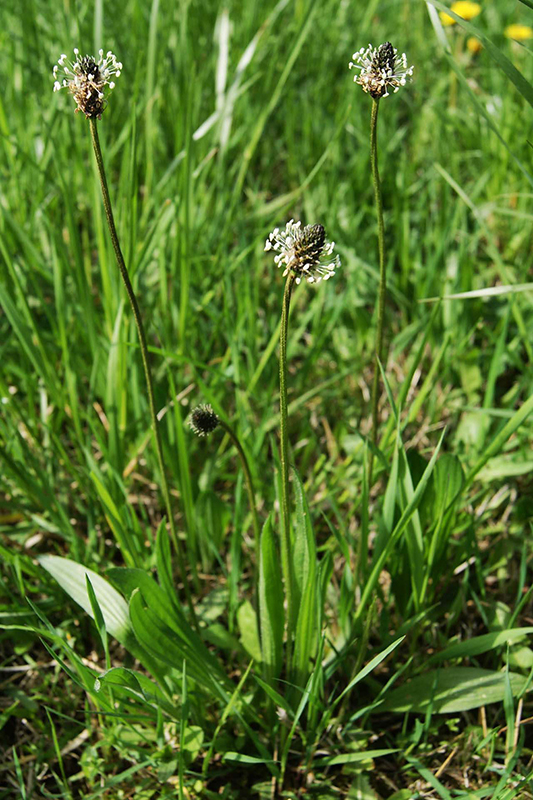Plantago lanceolata
Jitrocel kopinatý - Plantago lanceolata

Čeleď: jitrocelovité (Plantaginaceae)
Lidové názvy: babka, celníček, hojílek, hítrocíl, myší ocas, myší ouško, ranocelči volský jazyk, beraní jazyk, psí jazyk, olověný jazyk, čelník a svalník
Krátký popis: výška 5 - 50 cm, hojný na vlhkých loukách
Květy: 2 - 4 mm dlouhé s nahnědlými okraji
Listy: přízemní růžice, listy kopinaté nebo čárkovitě kopinaté, 10 - 20 cm long, 0,7 - 2 cm široké
Kořeny: bohatě rozvětvený kořen může dosahovat hloubky až 60 cm
Místo výskytu: louky, pastviny, parky, ropná pole, cestičky, pole
Období sběru: listy lze sbírat od dubna do října
Použití:
Rostlina obsahuje mnoho tříslovin, flavonoidů, kyselinu křemičitou a má antibakteriální účinky. Je vhodná pro přípravu čaje, šťávy nebo sirupu. Především sirup je považován za účinnou domácí medicínu proti kašli. Čerstvé listy pomáhají při bodnutí hmyzem, kdy jsou aplikovány na místo bodnutí ve formě kaše. Čerstvé listy jitrocele kopinatého je možné jemně nasekat do salátu, jsou také výborné na chleba s máslem.
Sirup proti kašli
Suroviny:
Čerstvé listy jitrocele (sbírejte pouze celé, nepoškozené listy, nesbírejte u silnice nebo v místech s vysokou pravděpodobností znečištění psími exkrementy), asi stejné množství na kousky nadrceného vyzrálého kandysu.
Příprava:
Do sklenice se šroubovacím víčkem pokládejte až do vrchu střídavě listy jitrocele a kandys. Ukončete horní vrstvou kandysu. Nyní sklenice uzavřete a označte štítkem s obsahem a datem přípravy. Nyní necháte vše odstát asi tři měsíce, dokud kandys zcela nezkapalní. Poté sirup přeceďte přes cedník nebo punčochu a listy vymačkejte. Hotový sirup se poté plní do vhodných uzavíratelných lahví a označí se štítkem. Tento sirup vydrží cca jeden rok.